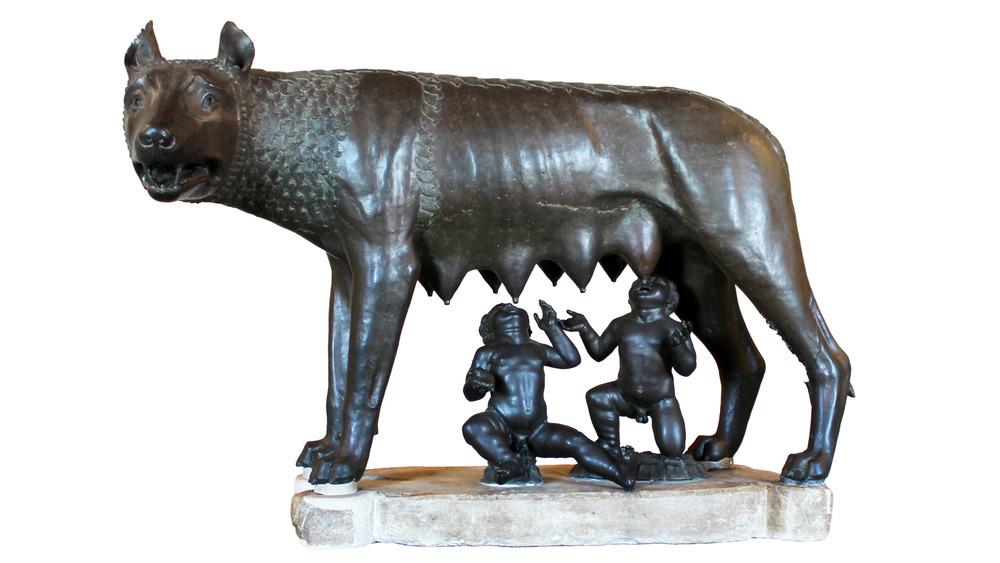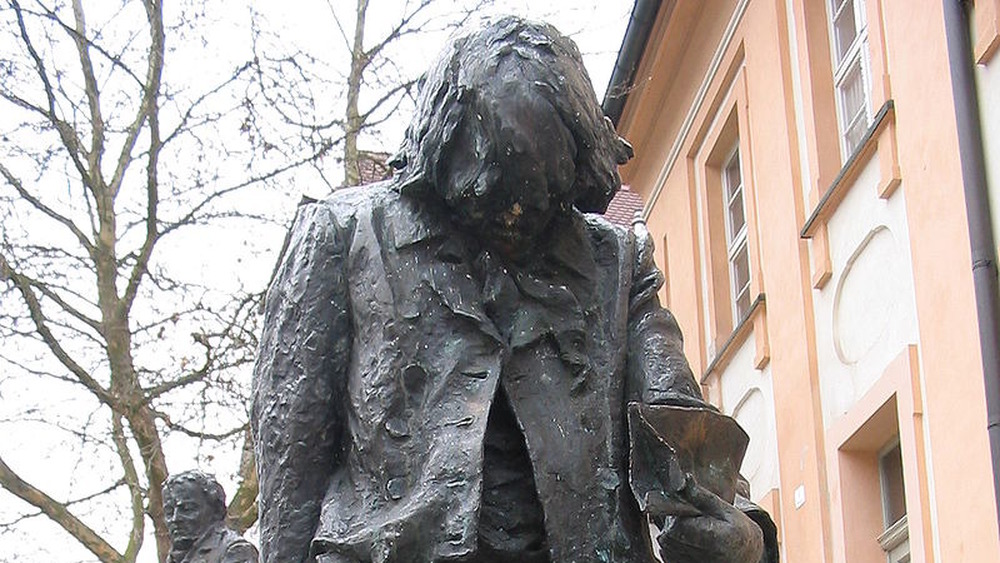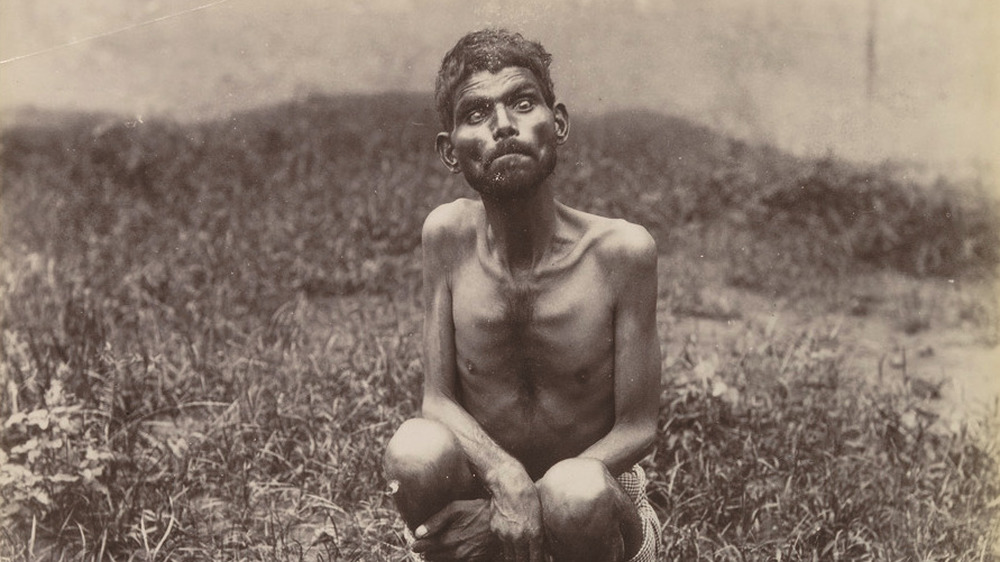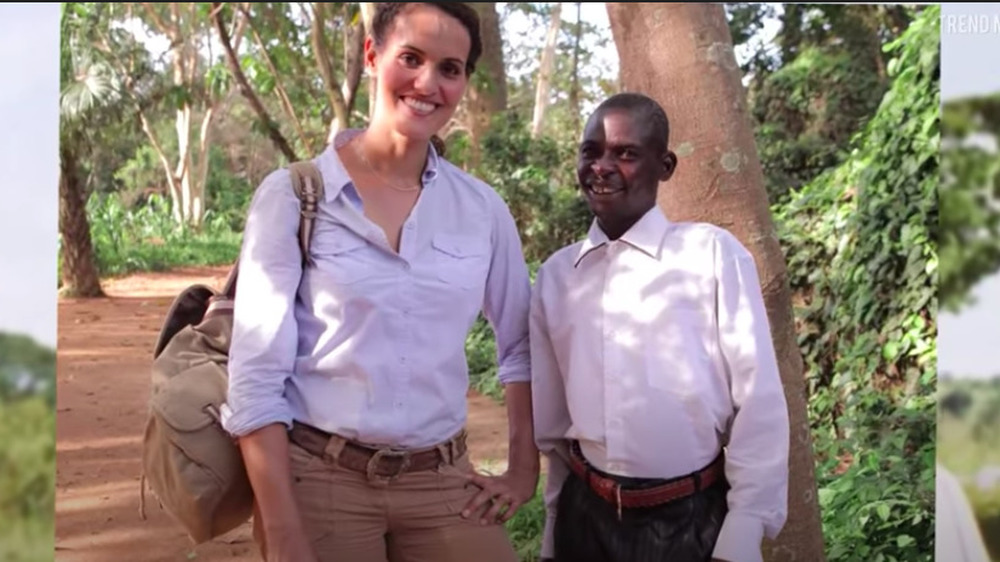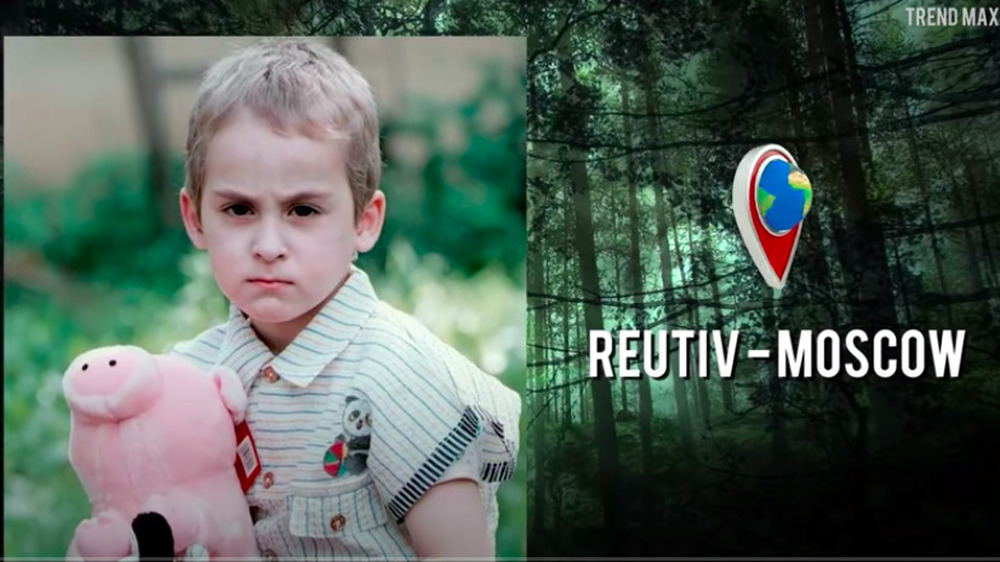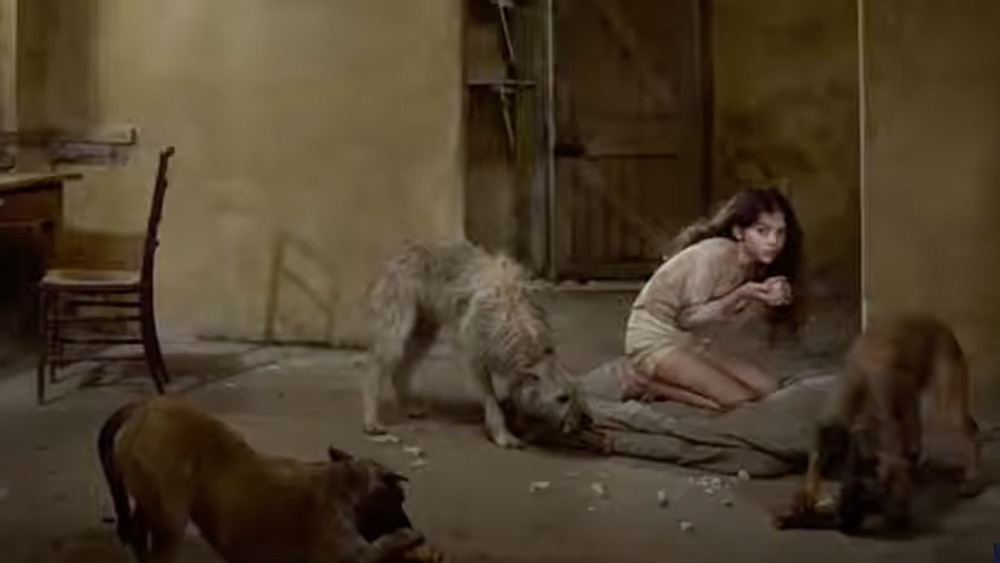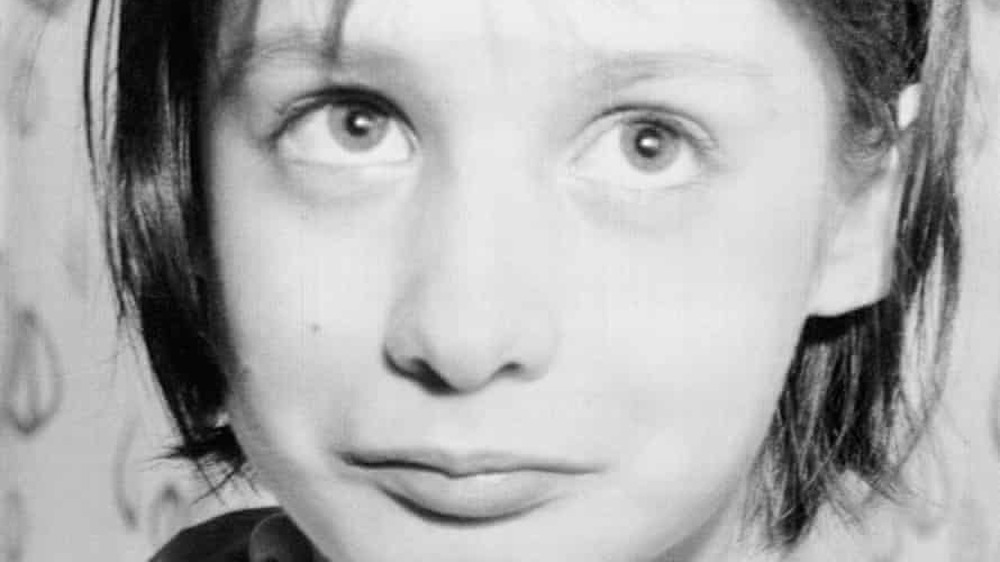Tragic Tales Of Feral Children
While the phrase "raised by wolves" is one used often to denote children who don't listen to their parents and have poor habits or manners, there is actually more to the idiom than meets the eye. Throughout history, there are records of children who are said to have actually been raised by wolves (and other animals, but more on that soon). Called feral children, these individuals were raised in isolation — sometimes on purpose, sometimes not — and therefore developed very few social skills, more often taking on the habits of the animals with which the human child was living.
For much of history, the idea that feral children existed was something of myth and legend. The city of Rome, for example, was said to be founded by twins Romulus and Remus, who were raised by a she-wolf. While purely a myth, the story of living amongst wild animals without human contact (until inevitably being found by humans and thus being designated a feral child) has appeared in our historical (and contemporary record) again and again, despite the ever-increasing net of technology and ability to communicate around the world. From 1600s Belgium to 1970s Los Angeles, these are some of the most interesting tales of feral children on the planet.
John of Liege, one of the first English accounts of a feral child from the 1600s
The first English written account of a feral child comes to us in 1644 from the English courtier and diplomat Sir Kenelm Digby. His account is that of John of Liege, a 5-year-old boy who in the 1600s ran into the forests near Liege, Belgium, to escape advancing enemy soldiers during a religious war that was plaguing the area. Once the fighting was over, his friends and loved ones returned to their village, but John did not. History tells us that, for the next 16 years, John lived alone in the woods, subsisting off of whatever he could find — mostly wild fruits and roots.
Then, when he was 21, John was seen in society once again when he was caught trying to steal food from a farm, thus ending his time living on his own in the wild. From the time of his reintroduction into society, it was found that two major things had occurred — John had more or less forgotten how to speak to his friends and family, and he had developed an extraordinary sense of smell during his time in the wild. On one hand, John eventually did recover his faculty for language. On the other, his canine-like sense of smell dissipated the longer he stayed amongst humans.
Victor of Aveyron, a boy found wandering the woods in 1800s France
Another historical feral child is Victor of Aveyron. In the early 1800s outside of Aveyron, France, a boy of about 12 years old was found wandering in the woods. He could not speak when he was found, and his body was covered in scars, a sign that authorities took to mean he had spent years in the wilderness. Another of the boy's eccentricities was his penchant for very selective hearing (he would ignore gunshots, but if he heard the cracking of a nut shell, he would become very alert, according to History). He was then taken under the care of Jean-Marc Gaspard Itard, a French physician who worked with the deaf.
Itard then spent the next several years attempting to teach the boy he had named Victor how to act as other humans did. Notable of Itard's accomplishments were getting Victor to wash, to wear human clothing, and show basic signs of empathy. The true goal — speaking — eluded Victor, however. While he could understand basic commands and questions, Victor died at the age of 40, having never spoken one full sentence during his entire time with Itard.
Kaspar Hauser, whose death was as tragic as his life in 1800s Germany
One of the more puzzling stories on this list is that of Kaspar Hauser. In what is present-day Nuremberg, Germany, in 1828, a teenage boy was found wandering around the town square. On his person were two letters. The first came from a laborer and said that the boy had been the man's charge since 1812 and that he needed to be educated but kept under closer supervision. The second — apparently written by his mother — stated that the boy's father was a cavalry officer and was deceased.
After being found, Hauser was taken in and the process of educating him began. He learned quickly and, because of his bizarre story (he also did not know where he was from or who he actually was, beyond his name), his status as a local celebrity grew (which he tried to take advantage of by telling tall tales and embellishing his own past). Eventually, the fourth earl of Stanhope took him in. It was after this that, according to Britannica, Hauser became a clerk in the office of Anselm von Feuerbach. It was around this time, too, that there were multiple attempts on Hauser's life. One such attempt was fatal, and in 1833, he was found stabbed to death (the perpetrator having never been fully ascertained, according to Live Science).
The most curious part of Hauser's story is his origin. While some explain away his eccentricities as medical in origin (due to isolation, abuse, or something else), other theories have been floated that he was actually related to royalty (this theory gained ground due to the attempts on his life). The real story behind Hauser's life, though, may never be uncovered.
Dina Sanichar, the boy who Mowgli was based on
While it may seem like a purely imaginative creation, the character of Mowgli in Rudyard Kipling's The Jungle Book is actually based on a real person, Dina Sanichar. Sanichar was found in a cave by a band of hunters in Uttar Pradesh, India, on a Saturday in 1872 (Sanichar is "Saturday" in Urdu). According to India Times, hunters killed the wolves he was living with and took Sanichar to a local orphanage, where he would remain for the rest of his life. When they found him, Sanichar walked on all fours, communicated only in grunts, and preferred to eat raw meat.
For the rest of his life, missionaries at the orphanage attempted to teach Sanichar how to act more like a human in society. While they eventually got him to wear clothing and eat some cooked food, he still preferred to sharpen his teeth on bones and eat raw meat. One human habit he did pick up, however, was smoking, and it was smoking that contributed to his death by tuberculosis in 1895. In all of his time at the orphanage, Sanichar never spoke, never really left the grounds of the orphanage, and only made one friend – another feral child who died not long after arriving.
Oxana Malaya, who was raised by wolves in Ukraine
Another story of a child living with canines concerns that of Oxana Malaya, a girl who was found living in the wild in the Ukraine in 1994. Found in the forest not far from her home, Malaya was said to walk on all fours and bark like the dogs she was found living with at the time of her discovery. Once someone found her, they called the cops, and as Radiolab writes, Malaya was so much a part of the pack that in order for the humans to rescue her, the other wild dogs had to be bribed with treats as a distraction.
Once taken from the dogs, it was found out that Malaya had likely been abandoned by an alcoholic family and resorted to living with the dogs as a means of survival. From the time of her rescue, she lived in various institutions where she attracted the attention of various television and documentary programs, including a United Kingdom-based outfit that employed a child psychologist to study Malaya. The psychologist's work with Malaya uncovered developmental deficiencies, but through various tests and trials, it was uncovered that Malaya was able to understand certain words, phrases, and questions. Malaya is still alive today, living on a farm in Odessa, Ukraine, where she helps with basic chores.
Sujit Kumar, who lived in a chicken coop in Fiji
Wolves and wild dogs are not the only animals that feral children have been recorded as living among. In the case of the Fijian man named Sujit Kumar, it was chickens. According to The Guardian, after Kumar's mother committed suicide and his father was murdered, he fell into the care of his grandfather. His grandfather, though, had other ideas and locked Kumar in a chicken coop. It was there he spent the next four years.
At one point, his grandfather must have had a change of heart (or just got tired of the boy), because the next record of him was being found by a welfare worker in 1978 in the middle of the night. The welfare officers brought him to a group home where Kumar's story, sadly, does not get any better — he spent the next 20 years tied to a bed because of his aggressive tendencies. Eventually, the widow of a mountain climber from New Zealand, Elizabeth Clayton, learned of Kumar's plight and got involved. He was untied and allowed to start schooling in an attempt to reintegrate him into society after so many years of isolation. He continues to be cared for by Clayton.
Marina Chapman, who lived with monkeys in Colombia
Some feral children, after being rescued from their circumstances, are able to live happy, healthy lives. Marina Chapman is one such individual. At around 5 years old, according to The Guardian, Chapman was playing near her childhood home when she was abducted by two people and left in the jungle alone. After wandering the jungle, she came upon a family of monkeys, who at first ignored her. She stayed nearby and after some time, the monkeys befriended her, and Chapman began to learn their ways. She was eventually found by hunters, who in turn sold her to a brothel.
Her story didn't end there, though. She escaped from the brothel and lived on the streets for a time, where she was then taken in by another family (who in turn enslaved her). A neighbor of that family helped her escape and sent her to live with one of her own children. It's there that Chapman's story finally took a turn. The family Chapman lived with was well-off thanks to success in the textiles business and sent their own children to Bradford, in England, because it was a hub of the wool industy. Chapman followed as a nanny, and it was there that she met the man who would become her husband. They married shortly after they met and now have two children.
John Ssebunya, who ran away after seeing his father murder his mother in Uganda
John Ssebunya's story starts with tragedy but thankfully gets much, much better. When he was only 2 or 3 years old, he saw his father murder his mother. Thinking he might be next, Ssebunya ran away into the jungle. (According to The Guardian, his father was later found hanged.)
On his own, Ssebunya was eventually befriended by a group of monkeys. They shared food with him and taught him their ways — such as how to climb trees. For around the next year, he lived this way, until a villager spotted Ssebunya one day and brought him back to her village. The villagers worked to bring him into good health. Once they did, they contacted a couple who ran an orphanage, who came and took Ssebunya. These people, named Paul and Molly Wasswa, adopted Ssebunya and began caring for him. They worked to teach him how to live in society and, as of the time of the Guardian article, he was slowly learning and was able to communicate in full sentences.
Ivan Mishukov, who lived with a pack of wild dogs in Russia
Sometimes, children become feral on purpose, as is the case of Ivan Mishukov, who ran away from his family at a tender age. When he was just 4 years old, Mishukov left abusive parents and chose to live on the streets instead. It was on the streets of Reutov (located west of Moscow) that Mishukov found a pack of wild dogs and proceeded to become part of the pack by begging for food — for him and for the dogs. Sharing with the dogs, they in turn made him one of their own, in a sense, and as the Calgary Herald writes, Mishukov would spend the next two years living with the pack on the streets.
Eventually, he was captured and sent to a children's home. Mishukov, unlike many other feral children, had the benefit of understanding language before leaving home, so upon reintroduction into society, he was able to interact on a level that was on par with other children his age. He went on the attend a Russian naval cadet school and, as of 2019, works at a wire plant.
Madina, who lived with stray dogs in Russia
For Madina, the first three years of her life were spent living with dogs. She huddled with them for warmth during freezing Russian winters, played with them, and shared their food as a member of their pack. This was, according to the BBC, all while her mother was around. Madina's father had left not long after she was born and her mother, instead of taking on the task of raising her daughter, turned to alcohol, ignoring her daughter.
Drunk much of the time, it was said that Madina's mother would sit at the table and eat while her own daughter remained on the floor, chewing on bones with the other dogs. Ignored by her mother, Madina would run to the local playground, where she was also ignored by neighborhood children, only reinforcing her connection with the dogs she lived with. When she was rescued by social workers in 2013, she was found to be mentally and physically well, even after all she was forced to suffer through.
Genie, who was found by California government workers in 1970
The story of Genie Wylie is one that illustrates that feral children can be found in even the most civilized of places. In the 1970s in California, a woman holding what officials thought was a small child walked into a welfare office seeking aid. Upon looking at the girl in the woman's arms, they realized that she was older than originally guessed (she was actually 13) but could not talk and was malnourished and incontinent, reports The Guardian.
Authorities took the girl and after digging into her past found out that her father had kept her strapped to a chair from the time she was very little. While strapped to the chair, she was not allowed to make any sort of noise and was severely beaten if she did. After becoming a ward of the state, Wylie spent the next several decades working with professionals to try and acclimate to the society that had all but left her for dead. Over time, her story was overshadowed by countless others, and she faded into the background. To this day, most people do not know what became of Wylie – not even the linguist who worked with her for years after her rescue.
